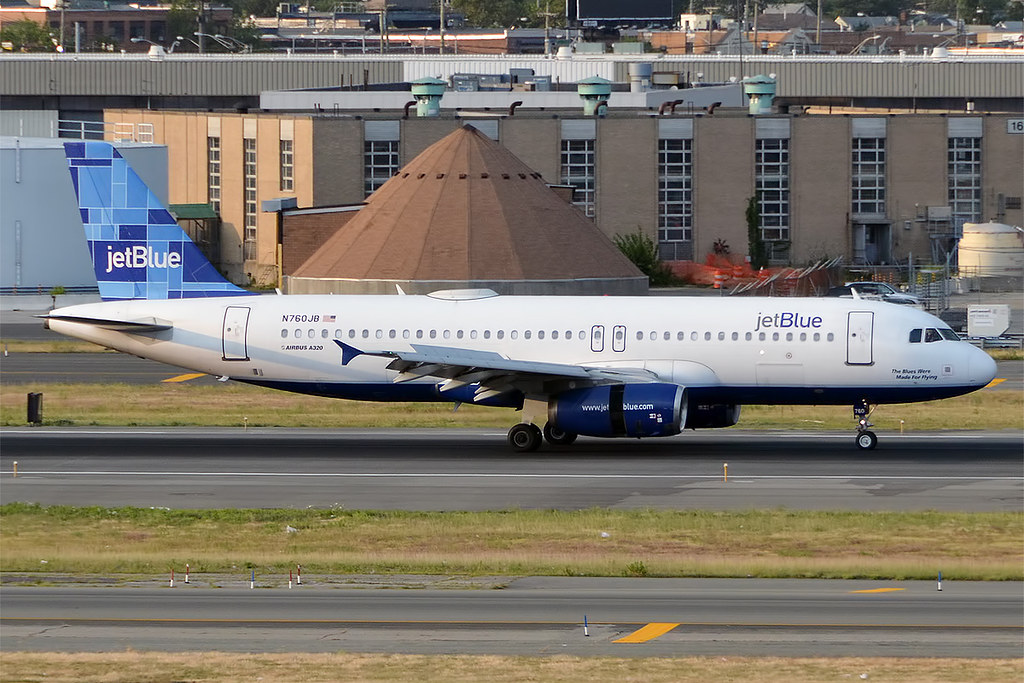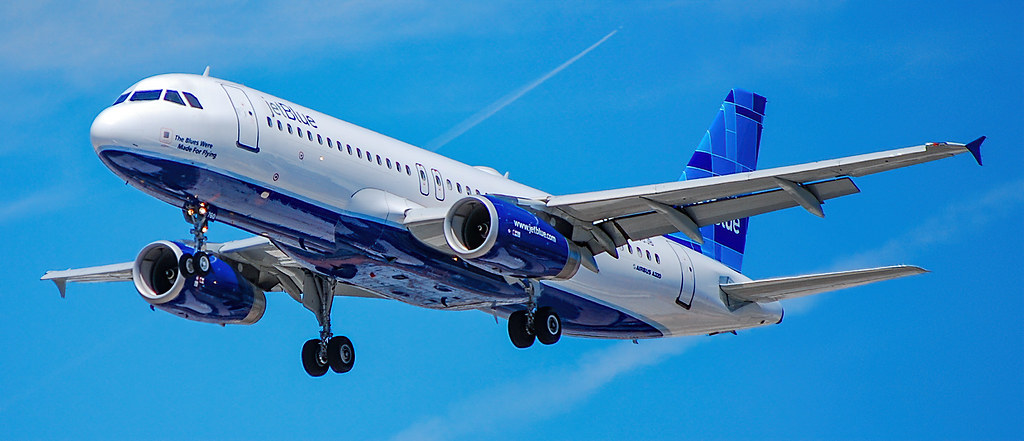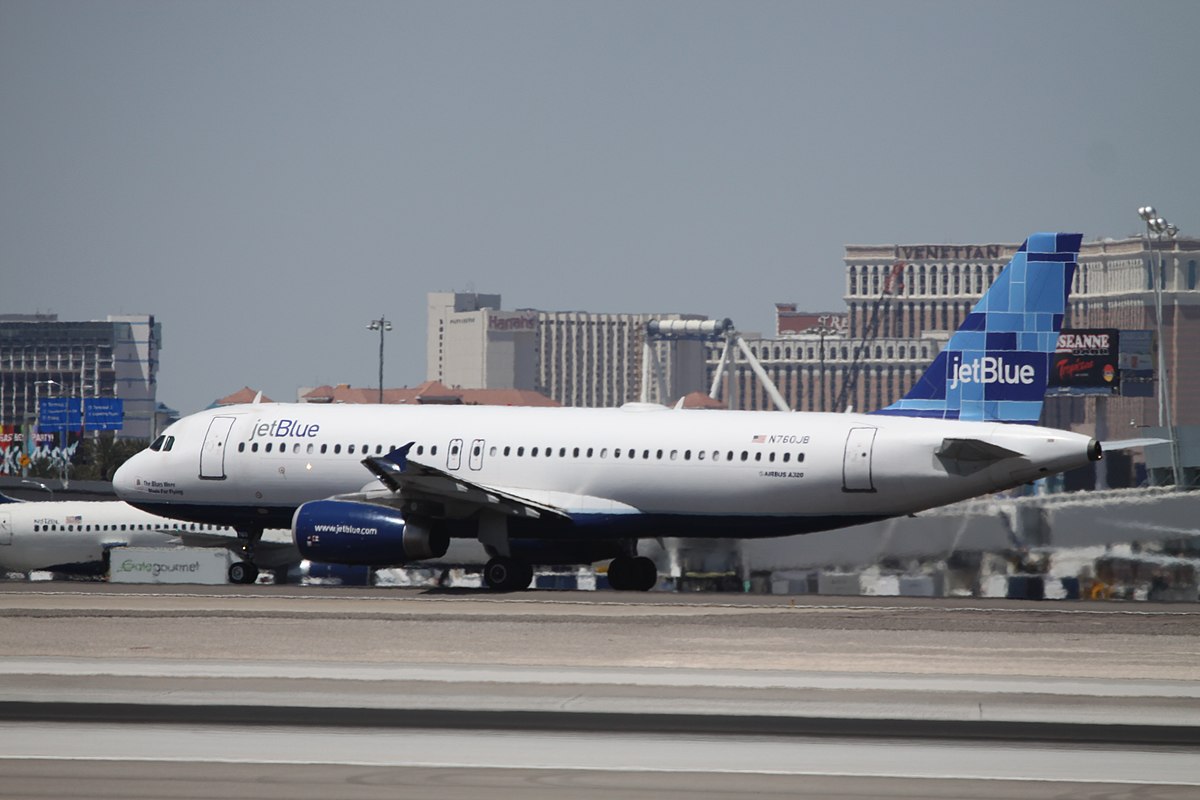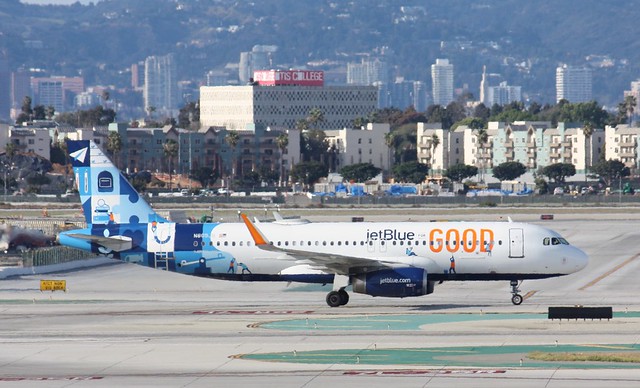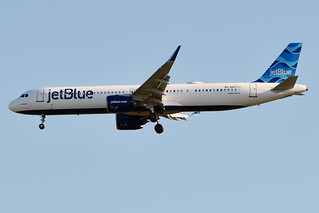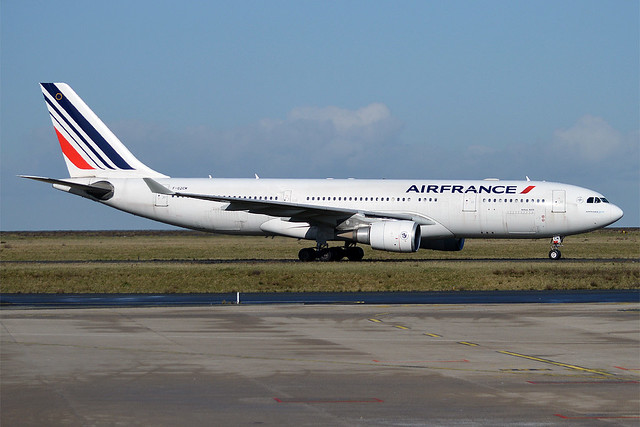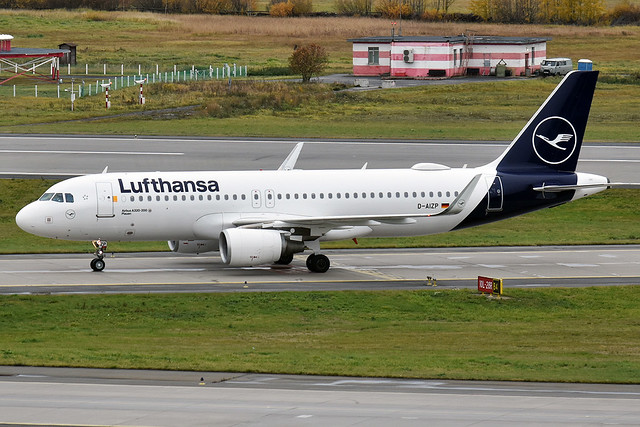Jetblue A320 at Hayden on Jan 22nd 2022, tail strike on takeoff, B350 on short final in opposite direction
Last Update: December 13, 2023 / 11:42:31 GMT/Zulu time
Incident Facts
Date of incident
Jan 22, 2022
Classification
Accident
Airline
Jetblue
Flight number
B6-1748
Departure
Hayden, United States
Destination
Fort Lauderdale, United States
Aircraft Registration
N760JB
Aircraft Type
Airbus A320
ICAO Type Designator
A320
Airport
Yampa Valley Airport, Hayden
Airport ICAO Code
KHDN
The FAA reported: "AIRCRAFT INCURRED A TAIL STRIKE ON DEPARTURE, HAYDEN, CO.", stated the damage was unknown and rated the occurrence an incident, later correcting to accident.
The NTSB opened an investigation into the occurrence rating the occurrence an accident.
A reader made The Aviation Herald aware that a Beech 350 was on approach to runway 28 (in opposite direction to the departure) at the time, the Jetblue might have suffered the tail strike as result of an avoidance maneouver. Neither FAA nor NTSB mentioned the presence of another aircraft in the departure path or the possibility of a loss of separation/possible collision.
Passengers (supported by video evidence) reported the tail strike was clearly felt and heard upon rotation for takeoff, the captain announced about 20 minutes after departure (about the time they began the descent into Denver) that they were avoiding another small aircraft on approach in opposite direction, they were diverting to Denver.
According to the FAA ASDI data (radar tracking data) a Beech 350 registration N350J arriving from Fort Smith,AR (USA) was on approach to Hayden's runway 28 at the time of the accident and touched down at 11:58L (19:58Z) about 100 seconds after departure of the A320. At the time of the A320 becoming airborne the Beech 350 was 2.85nm from the runway 28 threshold descending through 7500 feet MSL (900 feet AGL). At the time the B350 touched down the A320 was climbing through 8800 feet MSL about 2.2nm past the runway 10 end (=runway 28 threshold) in a slight right hand turn about 0.4nm off the extended runway center line.
Hayden's Yampa Valley Airport features a runway 10/28 of 3048 meters/10,000 feet length at an elevation of 2010 meters/6600 feet MSL. Hayden Airport does not feature a control tower, a UNICOM frequency is published for the airport.
On Feb 24th 2022 the NTSB reported the aircraft was cleared for takeoff from runway 10 while still taxiing to the runway. At that point in time the crew heard another aircraft was on a 10nm final. The crew initiated their takeoff, during the takeoff run they heard the aircraft was on final approach to runway 28 opposite to their departure direction, observed the other traffic on their TCAS display and understood an evasive maneouver was needed. During the rotation for takeoff the tail contacted the runway surface, the aircraft subsequently diverted to Denver. The aircraft sustained substantial damage, the occurrence was rated an accident and is being investigated by the NTSB.
On Dec 13th 2023 the NTSB released their final report and investigation docket concluding the probable causes of the accident were:
The captain’s rotation of the airplane pitch before the rotation speed on takeoff due to his surprise about encountering head on landing traffic, which resulted in an exceedance of the airplane’s pitch limit and a subsequent tail strike.
Contributing to the accident was the flight crew’s expectation bias that the incoming aircraft was landing on the same runway as they were departing from, and the conflicting traffic’s nonstandard use of phraseology when making position calls on the common traffic advisory frequency.
The NTSB analysed:
JetBlue Airways flight 1748 incurred a tail strike on takeoff from runway 10 at Yampa Valley Airport (HDN) resulting in substantial damage to the airplane.
About 1148 mountain standard time JetBlue’s 1748 flight crew announced on the common traffic advisory frequency (CTAF) that they were leaving the ramp area to taxi to runway 10 for departure. A few seconds later, a Beechcraft B300 King Air, N350J, on an instrument flight rules (IFR) flight plan reported on the local CTAF that they were “about 9 minutes out, for ten, coming in from the east, descending out of 17,000 ft”. The Universal Communications Frequency (UNICOM) operator responded to N350J stating that there were “multiple aircraft inbound” and winds were calm and provided the altimeter setting. After this exchange, the JetBlue crew began discussing the active runway and the multiple inbound airplanes using runway 10.
Two minutes later, the JetBlue flight crew contacted Denver air route traffic control center (ARTCC) and reported that they were at HDN, preparing for engine start and would be ready for departure in about 6 or 7 minutes. The Denver controller asked the flight crew if they were planning on departing from runway 10, to which the crew concurred, and the Denver ARTCC controller instructed them to contact him when they were ready for departure.
About the time the JetBlue flight crew was starting their second engine and conducting engine checks, the King Air flight crew was contacting Denver ARTCC to cancel their IFR flight plan because they had visually acquired HDN and intended to land on runway 28. The Denver ARTCC controller acknowledged the IFR cancellation, instructed them to squawk 1200 in the aircraft’s transponder and approved a radio frequency change. The King Air’s flight crew subsequently announced, about 1153 on CTAF that they were “going to go ahead and land two eight” and were “straight-in two eight right now”. About 10 seconds later, the JetBlue flight crew announced on CTAF they were leaving the ramp area and were taxiing to runway 10 for departure. HDN UNICOM reported that multiple airplanes were inbound, and the winds were calm.
While the JetBlue flight crew was performing an after-start checklist, the King Air announced on CTAF they were on a “12-mile final two eight straight-in”. About 45 seconds later, the King Air asked on CTAF if anyone was about to depart from runway 10, and the JetBlue flight crew replied that they intended to hold on the taxiway near the end of runway 10 and wait for a clearance from Denver ARTCC. The King Air replied they were on a "10-mile final, two eight, straight-in”. The JetBlue flight crew said “alright, copy” and that they would keep an eye out for them.
About 1155, the JetBlue flight crew contacted Denver ARTCC and reported they were ready for departure on runway 10 at HDN. The Denver center controller cleared them to Fort Lauderdale/Hollywood International Airport (FLL), Fort Lauderdale, Florida, as filed, with a 2-minute clearance void time. The flight crew read back the clearance including the 2-minute void time restriction.
According to the Aeronautical Information Manual (AIM), a pilot may receive a clearance, when operating from an airport without a control tower, which contains a restriction for the clearance to be void if not airborne by a specific time. A pilot who does not depart before the clearance void time must advise air traffic control (ATC) as soon as possible of their intentions.
At 1156, the JetBlue flight crew announced on CTAF that they had received their clearance and would be departing on “runway one zero”. Within 5 seconds, the King Air’s flight crew reported they “had a king air on final two eight” and that they “had been calling.” JetBlue’s flight crew replied on CTAF that they thought the King Air was “8 or 9 miles out”, to which the King Air replied they were 4 miles out, “even less than that.”
The JetBlue first officer, (pilot monitoring (PM)) stated that they looked for the airplane both visually and on their onboard traffic alert and collision avoidance system (TCAS) and did not see any air traffic. JetBlue flight crew acknowledged the King Air, looked for traffic approaching runway 10, and announced on CTAF that they were beginning their takeoff from runway 10 at HDN. The King Air’s flight crew replied that they were on a short final and “I hope you don’t hit us.” According to ADS-B data, when JetBlue taxied onto runway 10 the King Air was on a reciprocal course 4.91 nautical miles from JetBlue.
JetBlue’s crew increased thrust for takeoff about 1157. About 11 seconds later, just prior to the 80 knots call out, the PM asked the PF if the King Air was on runway 28. The captain (pilot flying (PF)) asked “is he?” to which the PM said “Yes, he is on 28, do you see him?” to which the PF said no. After the event, the JetBlue first officer explained that he observed traffic directly ahead on the TCAS during the takeoff run and pointed it out on the display to the captain.
About 20 seconds after JetBlue started their take off on runway 10, the flight crew of the King Air asked JetBlue if they were going to do a quick turn-out, to which they replied, “yes sir.”
Concurrent to this conversation, JetBlue’s captain pitched the airplane up, 24 knots before rotation speed, to avoid the approaching King Air and subsequently struck the tail of the airplane on the runway’s surface. He began a climbing right turn away from the traffic indicated on the TCAS. JetBlue’s captain and first officer both stated they never visually acquired the approaching King Air. According to ADS-B data, when JetBlue began its right turn after departure from runway 10 the King Air was on a reciprocal course with 2.27 nautical miles of separation between the converging airplanes.
Based on FDR data, the tail strike occurred about 1157, the crew continued their departure procedures and discussed if they experienced a tail strike, initially deciding to continue the flight to FLL. At 1203, they asked the flight attendants what they felt in the back of the airplane, to which the flight attendants stated they felt a tail strike. At this time, the aircraft was about 16,000 feet in altitude. Within 2 minutes of getting the flight attendant feedback, about 20,000 feet altitude, they contacted the airline’s maintenance controller for guidance although the aircraft had not annunciated any warnings regarding a pressurization issue. About 5 minutes later, when climbing through 26,000 feet, the maintenance controller recommended they land immediately so the airplane could be inspected for damage. They leveled the aircraft at FL310 and decided to divert to DEN, where they made a safe landing.
King Air N350J CTAF Communications
FAA Advisory Circular 90-66b describes the “self-announce” procedure that pilots use at uncontrolled airports, such as HDN, where pilots broadcast their call sign, position, altitude, and intended activity on the designated CTAF. In this event, N350J made several calls on CTAF including their original intent to land on runway 10, and then their decision to switch to runway 28. However, the composition of these calls had the potential to be clearer.
In order to help identify one airport from another, AC 90-66b states that “the correct airport name should be spoken at the beginning and end of each self-announce transmission.“ In particular, the repetition of the airport name at the end of a transmission also reinforces the airport to which the transmission relates to others on the frequency in case the first annunciation of the name was missed or garbled. All calls N350J made omitted identifying the airport at least once at the beginning or end of the transmission and sometimes they completely omitted the airport name. This non-standard phraseology reduced the effectiveness of their radio calls by providing opportunity for their call to be dismissed as relating to a different airport, or not relevant for the airport at hand.
It is common for pilots to omit the word “runway” when referencing an airport’s runway numbers, however standard ATC phraseology (as referenced in FAA Order 7110.10, 11-1-13 Number Usage) uses the word “runway” followed by the separate digits of the runway designation. For this airport, references to the runways would be expected to be “runway one zero” and “runway two eight.” All N350J’s radio calls omit “runway” when indicating the runway “two eight” they intended to land on. While context clues in the transmission can be used to ascertain the correct meaning of “two eight,” the prefix of “runway” would have provided a cue to listen that would have been more difficult to overlook in the face of expectation bias. Expectation bias is further discussed below.
UNICOM Communication
HDN had a Universal Communications Frequency (UNICOM), which is a nongovernment air/ground radio communication station that may provide airport information. UNICOM operators are not required to communicate with pilots, and if they do, there are no standards for the information conveyed. During this event, the UNICOM operator communicated with both JetBlue and N350J stating that “multiple airplanes” were inbound and that winds were calm. The UNICOM operator had the opportunity to improve the situational awareness in the pattern by including runway in use information in his brief. For example, when briefing N350J, he could have added that the latest call (which was from JetBlue) was using runway 10.
Further, when briefing JetBlue when they left the gate, the UNICOM operator had the opportunity to advise them that an aircraft was inbound for runway 28 instead of noting only that “multiple aircraft inbound.”
JetBlue Crew Expectation
Throughout JetBlue’s pushback from the gate, taxi, and beginning of takeoff roll, the JetBlue crew believed the King Air traffic was approaching runway 10. In response to hearing that the King air was on a 4-mile final, they expedited their departure so they would not interfere with the King Air’s landing, which they believed was going to happen behind them once they departed runway 10. This assumption also caused them to only scan for traffic on the approach end of runway 10 before entering the runway.
Expectation bias is a psychological concept which causes an incorrect belief to persist despite available contradictory evidence. In this case, the crew’s expectation that the King Air was arriving on runway 10, biased their perception of incoming information such that contradictory evidence (radio calls indicating the King Air was landing on runway 28) was ignored or manipulated in the brain to be consistent with the person’s current expectation. This bias occurs as part of basic information processing, and a person may not be actively aware of such biases at the perceptual level.
The crew’s initial assessment of the situation was correct, as N350J initially checked into the CTAF indicating they were inbound to Runway 10. While one of N350J’s calls (12 mile straight in) conflicted with checklist completion in the cockpit, the remainder of the calls did not conflict with attentional resources needed in the cockpit and the crew directly engaged several times with N350J on the CTAF. Despite these conversations, the detail of N350J arriving on the opposite runway and being a head on conflict, was not actualized by the crew until their takeoff roll as a result of expectation bias.
JetBlue flights out of HND were seasonal and normally departed and arrived on runway 10.
This combined with the flight crew’s limited experience flying out of non-towered airports, and time sensitive nature of the takeoff clearance could have exacerbated their expectation bias.
JetBlue Crew Inflight Response to Possible Tail Strike
JetBlue’s Flight Crew Operating Manual (FCOM) Volume I cautions that “if a tail strike occurs, avoid flying at an altitude that requires pressurizing the cabin and to return to the originating airport for a damage assessment.” The QRH procedure for a tail strike is to land as soon as possible and that a pilot should climb at a maximum of 500 feet per minute (fpm) and descend at a maximum rate of 1000 fpm to minimize pressure changes all the while not exceeding 10,000 ft msl or minimum safe altitude.
The JetBlue crew took about 6 minutes to establish they had a tail strike. At this point, they were climbing through 16,000 feet. The terrain east of HDN along the flight’s path prompted established minimum safe altitudes at 16,600 feet. Based on the procedure, this would have been an appropriate time to conduct the QRH procedure since both sets of guidance refer to actions “when a tail strike is experienced” rather than when a tail strike is “suspected.”
However, the crew did not discuss the QRH, and recorded climb/descent rates and altitudes reached above 16,600 suggest they did not reference the QRH. Higher than normal workload in the cockpit from discussion of the event, liaising with company maintenance, and the resulting diversion may explain their omission of this checklist after they confirmed the tail strike.
Past Investigation, Quincy, IL
The National Transportation Safety Board (NTSB) investigated an accident that occurred at an uncontrolled airfield that had a much different outcome. It occurred at Quincy Municipal Airport, near Quincy, Illinois, on November 19, 1996, when United Express flight 5925, a Beechcraft 1900C collided with a Beechcraft King Air A90. Flight 5925 was completing its landing roll on runway 13, and the King Air was in its takeoff roll on runway 04. The collision occurred at the intersection of the two runways. All 10 passengers and two crewmembers aboard flight 5925 and the two pilots aboard the King Air were killed.
The NTSB determined that the probable cause of the Quincy accident was the failure of the pilots in the King Air A90 to effectively monitor the CTAF or to properly scan for traffic, resulting in their commencing a takeoff roll when flight 5925 was landing on an intersecting runway. The Board also determined that contributing to the cause of the accident was an interrupted radio transmission from a pilot from another airplane, which led to flight 5925 pilots’ misunderstanding of the transmission as an indication from the King Air that it would not take off until after flight 5925 had cleared the runway.
JetBlue Safety Actions following Flight 1748 Tail Strike
JetBlue’s safety team worked with JetBlue University instructors to develop training curriculum for flightcrew on non-towered operations, un-annunciated failures and QRH procedures, and time compression that would be a two-hour brief using JFK to Burlington with an arrival or departure after the tower has closed as an example.
Metars:
KHDN 222156Z AUTO 18003KT 10SM CLR M06/M13 A3035 RMK AO2 SLP346 T10611133 FZRANO=
KHDN 222056Z AUTO 17003KT 10SM CLR M04/M11 A3034 RMK AO2 SLP335 60000 T10441106 56009 FZRANO=
KHDN 222014Z AUTO 21003KT 10SM FEW003 M06/M12 A3034 RMK AO2 FZRANO=
KHDN 221956Z AUTO 00000KT 9SM BKN003 M07/M13 A3035 RMK AO2 SNB45E55 SLP344 P0000 T10671128 FZRANO=
KHDN 221923Z AUTO 19003KT 10SM BKN003 M06/M14 A3035 RMK AO2 FZRANO=
KHDN 221856Z AUTO 00000KT 9SM OVC005 M04/M10 A3036 RMK AO2 SNE52 SLP339 P0000 T10441100 FZRANO=
KHDN 221826Z AUTO 22003KT 8SM -SN BKN005 M10/M13 A3037 RMK AO2 P0000 FZRANO=
KHDN 221756Z AUTO 21005KT 8SM -SN FEW003 M11/M14 A3037 RMK AO2 SNB11 SLP364 P0000 60000 T11061144 11072 21144 51008 FZRANO=
KHDN 221735Z AUTO 19003KT 6SM -SN SCT001 M08/M12 A3037 RMK AO2 SNB11 P0000 FZRANO=
KHDN 221717Z AUTO 00000KT 3SM -SN BR BKN001 M10/M12 A3037 RMK AO2 SNB11 P0000 FZRANO=
KHDN 221715Z AUTO 00000KT 1 1/4SM -SN BR OVC001 M11/M12 A3037 RMK AO2 VIS 1/4V4 SNB11 P0000 FZRANO=
KHDN 221712Z AUTO 00000KT 3/4SM -SN BR OVC001 M11/M12 A3037 RMK AO2 SNB11 P0000 FZRANO=
KHDN 221656Z AUTO 04003KT M1/4SM FZFG OVC001 M12/M13 A3036 RMK AO2 SNE49 SLP361 P0000 T11171133 FZRANO=
KHDN 221647Z AUTO 05004KT 1/4SM -SN FZFG OVC001 M12/M14 A3037 RMK AO2 P0000 FZRANO=
KHDN 221642Z AUTO 05005KT 3/4SM -SN BR OVC001 M11/M13 A3037 RMK AO2 VIS 1/2V4 P0000 FZRANO=
KHDN 221640Z AUTO 05005KT 1 1/4SM -SN BR OVC001 M11/M12 A3037 RMK AO2 VIS 3/4V4 P0000 FZRANO=
KHDN 221637Z AUTO 05006KT 3/4SM -SN BR OVC001 M10/M12 A3037 RMK AO2 P0000 FZRANO=
KHDN 221556Z AUTO 21003KT 1/4SM -SN FZFG OVC001 M12/M14 A3036 RMK AO2 SNE02B33 SLP354 P0000 T11221139 FZRANO=
Aircraft Registration Data
Incident Facts
Date of incident
Jan 22, 2022
Classification
Accident
Airline
Jetblue
Flight number
B6-1748
Departure
Hayden, United States
Destination
Fort Lauderdale, United States
Aircraft Registration
N760JB
Aircraft Type
Airbus A320
ICAO Type Designator
A320
Airport
Yampa Valley Airport, Hayden
Airport ICAO Code
KHDN
Videos
This article is published under license from Avherald.com. © of text by Avherald.com.
Article source
You can read 2 more free articles without a subscription.
Subscribe now and continue reading without any limits!
Read unlimited articles and receive our daily update briefing. Gain better insights into what is happening in commercial aviation safety.
Send tip
Support AeroInside by sending a small tip amount.
Related articles
Jetblue A320 near Curacao on Dec 12th 2025, near collision with invisible US military aircraft
A Jetblue Airbus A320-200, registration N809JB performing flight B6-1112 from Curacao (Curacao) to New York JFK,NY (USA), was climbing through about…
Jetblue A320 near Tampa on Oct 30th 2025, inflight upset causes injuries
A Jetblue Airbus A320-200, registration N605JB performing flight B6-1230 from Cancun (Mexico) to Newark,NJ (USA), was enroute at FL350 about 70nm…
Jetblue A21N at Boston on Nov 3rd 2025, engine fire indication
A Jetblue Airbus A321-200N, registration N4077J performing flight B6-31 from Boston,MA (USA) to Amsterdam (Netherlands) with 132 people on board, was…
Jetblue BCS3 at Boston on Jun 12th 2025, runway excursion on landing
A Jetblue Bombardier C-Series CS-300, registration N3242J performing flight B6-312 from Chicago O'Hare,IL to Boston,MA (USA), landed on Boston's…
Jetblue A320 at Islip on Aug 13th 2025, engine shut down in flight
A Jetblue Airbus A320-200, registration N652JB performing flight B6-547 from Islip,NY to Orlando,FL (USA) with 167 people on board, was climbing out…
Newest articles
France A332 near Munich on Jan 4th 2026, toxic fumes on board
An Air France Airbus A330-200, registration F-GZCM performing flight AF-565 from Beirut (Lebanon) to Paris Charles de Gaulle (France), was enroute at…
Lufthansa A320 at Cluj on Jan 4th 2026, bird strike
A Lufthansa Airbus A320-200, registration D-AIZP performing flight LH-1668 from Munich (Germany) to Cluj (Romania), was on final approach to Cluj's…
Subscribe today
Are you researching aviation incidents? Get access to AeroInside Insights, unlimited read access and receive the daily newsletter.
Pick your plan and subscribePartner

ELITE Simulation Solutions is a leading global provider of Flight Simulation Training Devices, IFR training software as well as flight controls and related services. Find out more.
SafetyScan Pro provides streamlined access to thousands of aviation accident reports. Tailored for your safety management efforts. Book your demo today
AeroInside Blog
Popular aircraft
Airbus A320Boeing 737-800
Boeing 737-800 MAX
Popular airlines
American AirlinesUnited
Delta
Air Canada
Lufthansa
British Airways
